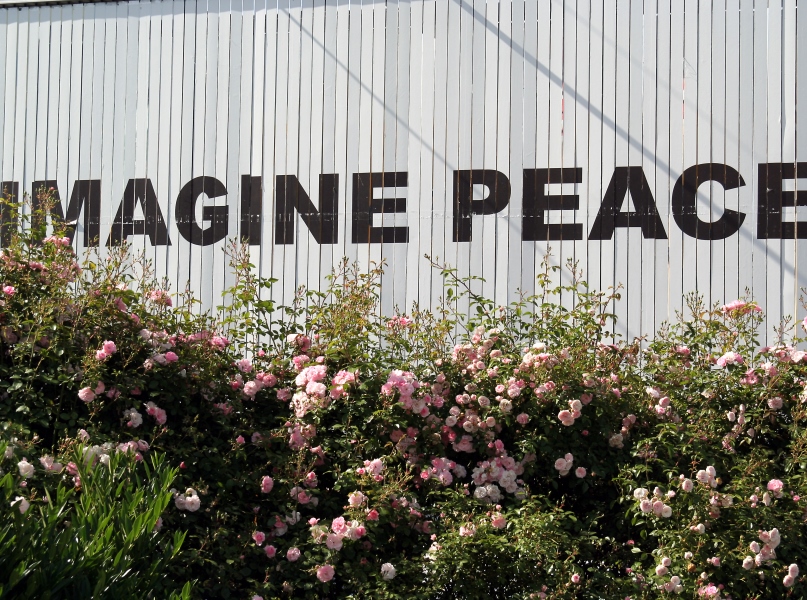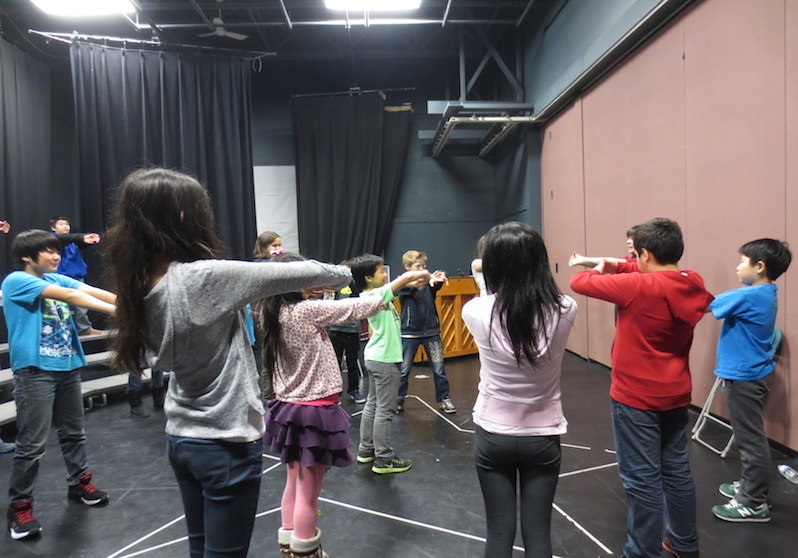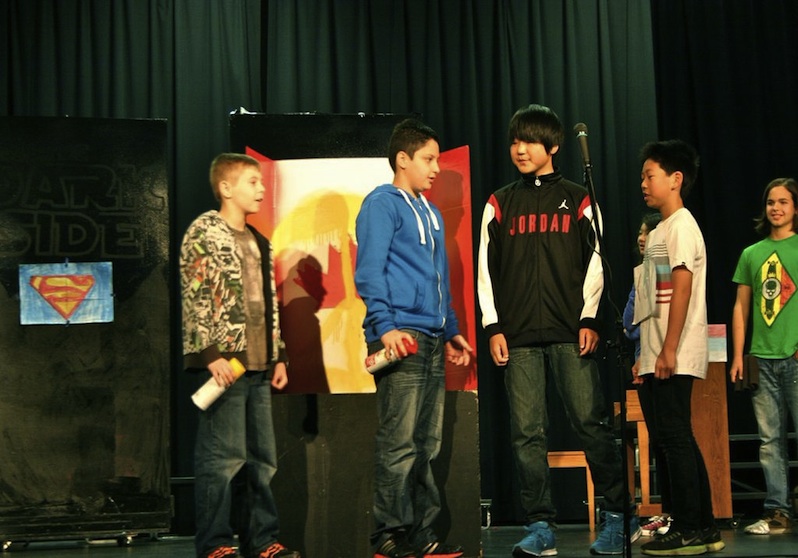Summit Middle Gr 6/7
Arts Education, Language Arts, Social Studies
School
Summit Middle School, Coquitlam
Teacher(s)
Teresa Ascoli
Shane Elgaard
Artist(s)
Mandy Tulloch
Class
Grade 6/7
Connection to the Vancouver Biennale Exhibition
Students went on a field trip along English Bay visited the following Vancouver Biennale installations:
217.5 Arc x13 (Bernar Venet, France)
A-Maze-ing Laughter (Yue Minjun, China)
Echoes (Michel Goulet, France)
Engagement (Dennis Oppenheim, USA)
Freezing Water #7 (Ren Jun, China)
At each piece students discussed their reactions to the installation, interacting with each piece in different ways and reflecting on how and what they convey to the viewer. Students inquired into the difference between artwork viewed in a museum and public artwork they could touch and interact with on a different level.
The curatorial theme of the Vancouver Biennale 2014-2016 Exhibition is Open Borders / Crossroads Vancouver. This project relates to the Exhibition Theme in many ways:
- Crosses borders as students learn about the cultures of other countries and make connections between them through art.
- Creates a crossroads of communication as students share their learning with the peers at their school.
- Crosses borders as art is used to teacher across different curriculum.
Overview
Following a field trip to Vancouver Biennale installations at English Bay, students conducted an inquiry into how art influences culture and culture influences art. Participating in theatre workshops and exploring their reactions to the installations, students learnt about how to communicate culture and identity through a variety of different artistic methods. Researching ancient civilizations and how their art connected to their everyday lives, students made connections to their own cultures and values and how they can be expressed through art. Students collaboratively wrote a play to share their learning, challenging definitions of art and investigating the cultures and artworks made by both ancient and present day cultures.
BIG IDEAS
Art helps bring awareness of cultural diversity.
Guiding Questions
How does art influence culture and culture influence art?
Curriculum Access
Arts Education: Students learnt about a variety of artistic methods in ancient and present day cultures, discussing the connection between cultural identity and art. Students created art of their own to reflect their own cultures and backgrounds.
Language Arts: Using research and storyboards, students collaboratively wrote a script for the play.
Social Studies: Students compared and contrasted the art of different ancient cultures and they relate to their culture, daily life and each other. Students studied such cultures such as Ancient Greece.
Learning Process
The project began with a field trip to various installations along English Bay where students discussed their reactions to the different pieces of art and the way that their interaction with the art changed it’s meaning. With their artist, students did improv workshops on how they imagined the artist felt while making the installations and discussed their own reactions in reference to the guiding questions. Students then explored different ways of communicating, exploring movement, improv and creating creative situations and characters during workshops with their artist. In class, students learnt about different ancient cultures, comparing the art created in each and how it related to their daily life and culture. Student explored their own culture/background experience in relation to art asking questions such as: “how is art expressed/values in your culture?” The students then broke into groups and chose one culture and their art to focus on. Artist workshops covered different theatre genres and storyboarding as students decided how they might best tell a story and share their message about their BIG IDEA. Students decided to set their play in a museum where art tells the story of different cultures, arguing that graffiti belongs in a museum and explaining why art works from around the world could be considered art. Students presented the history of graffiti dating back to ancient Greece and how it is used as a way to communicate messages of personal freedom and expression. Other students presented the Japanese art of Anime, displaying their own interpretations, its connection to Japanese culture and demonstrating how one can convey messages without verbal words through speech bubbles. Another group of students used music and dance to express their own culture and identity. The final group made connections between the cultures of France and China and their art by explaining the history and significance of large-scale art pieces such as the Eiffel Tower and the Great Wall of China. The play was performed for their peers in the auditorium of the school.
Student Creation
- A play about how art influences culture and culture influences art
- Artwork and the set for their play
Taking Action
Students presented their learning to their school through a play, asking students to examine their own definitions of what art is and the connections between culture and art.
Time Line
April
- Introduction to the Vancouver Biennale
- Field trip along English Bay
- Improv workshop reflecting on Biennale art and guiding questions
- Drama workshops on movement, improv, character
- In class inquiry into different cultures
- Comparing art from different countries
- Exploration into students’ own cultural background and relating it back to art
- Class broken into groups to research specific cultures
May
- Artist workshops on theatre genres and storyboarding
- Brainstorming ways to present their work
- Writing of the script
- Art and set creation
- Rehearsals
- Performance of their play to their school
Reflection
Artist: Mandy Tulloch
Can “Art” influence “Culture” or can “Culture” influence “Art” !
I was very interested to see how the students would respond to their “Big Idea”. We started as usual by exercises for team building, projection, body language and articulation. We then went on to story boarding and brainstorming. We also dedicated two workshops to debriefing about their field trips to the Biennale Art Pieces that they had seen. We did some improv based around these pieces and talked about how they thought the artist felt, then how did the pieces make the students feel. We then began our journey of building their message. How would they tell it? They decided to make a play about visiting a museum and convincing two people that “Graffiti belong in a museum. Also showing artwork from around the globe and why it is “Art”. The students blocked, wrote and helped direct the play. They built their set and made their artwork.
Related Material
 Communication and Diversity
Communication and Diversity



